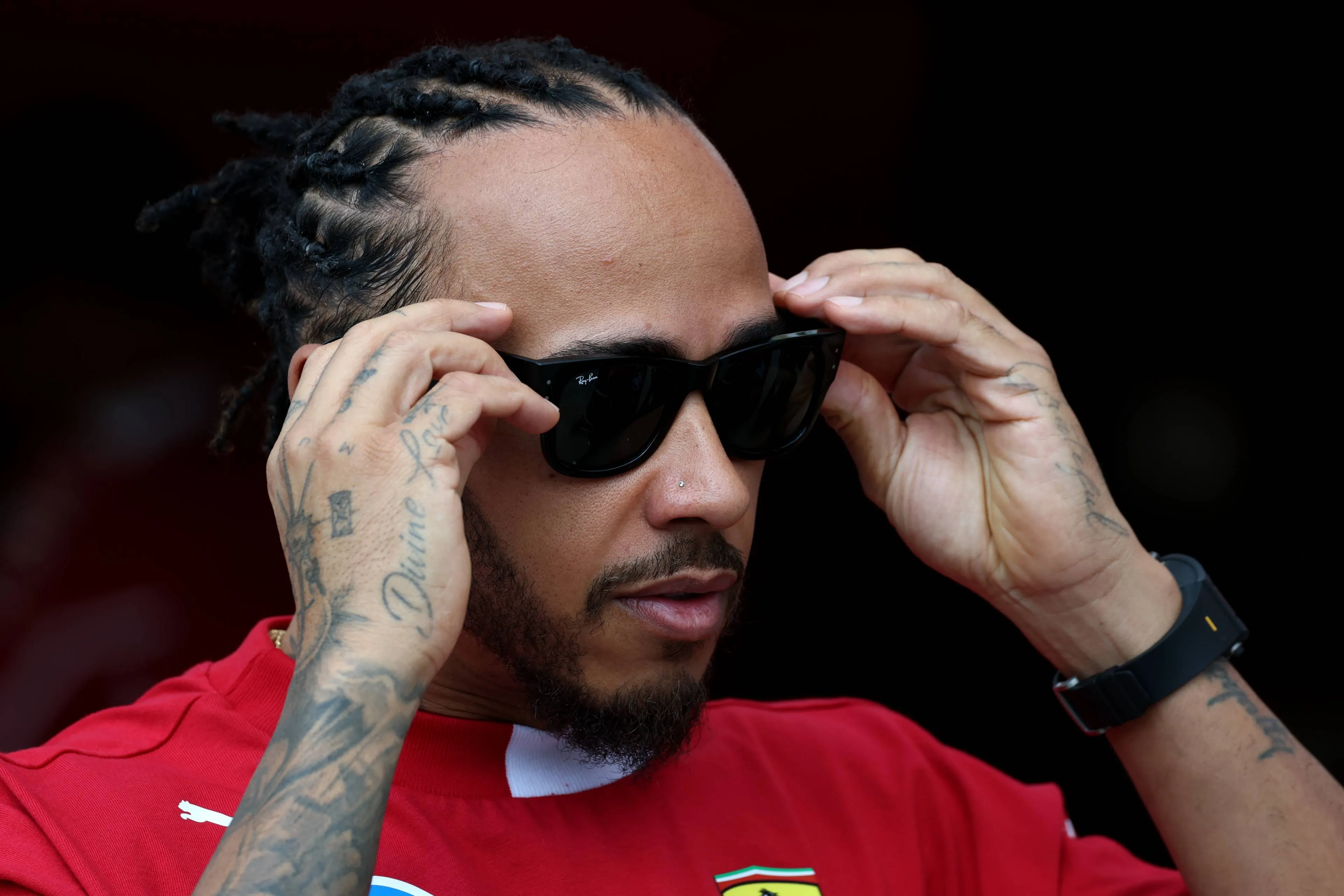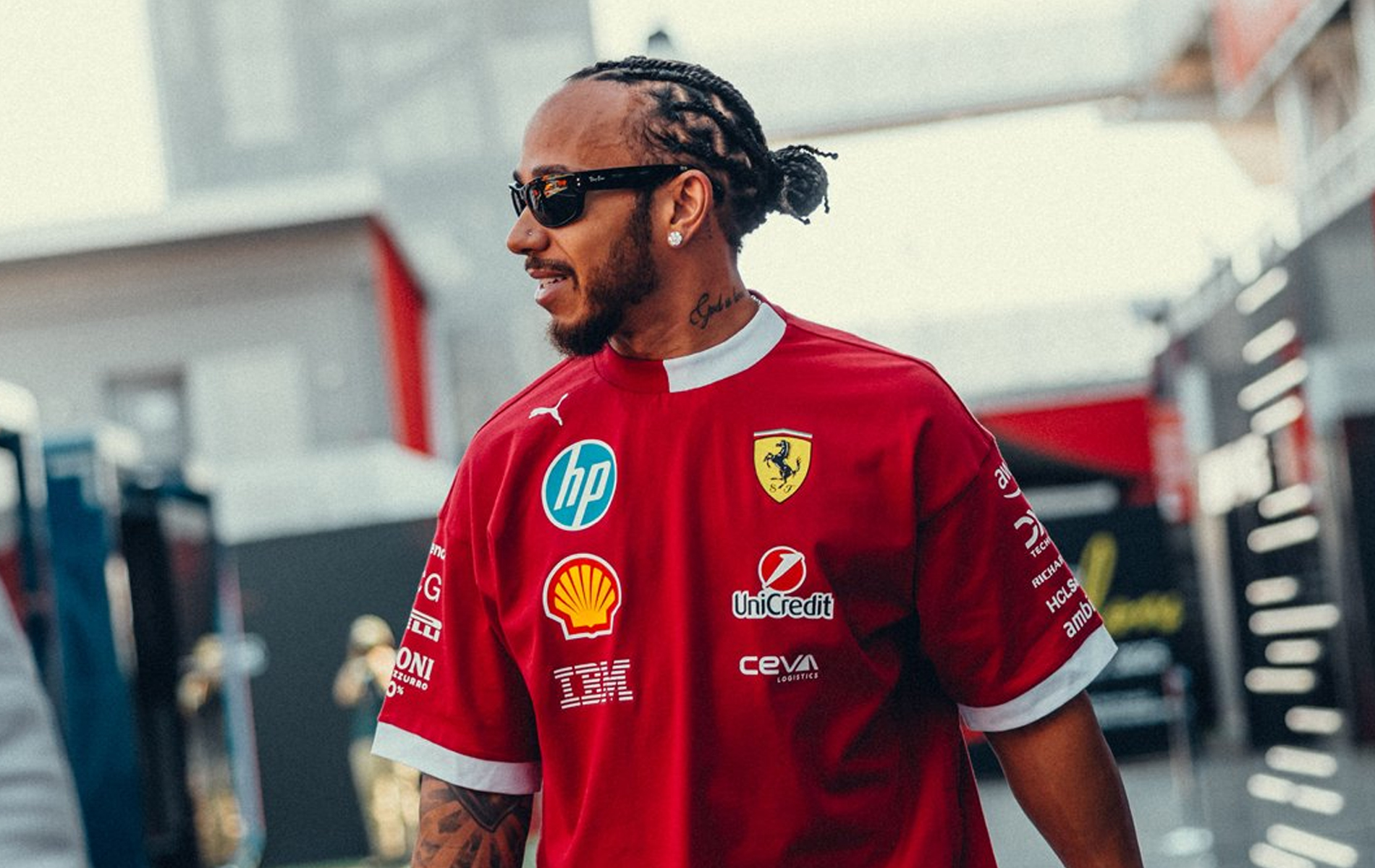The image is a study in contrasts: a man who earns more in a year than most elite drivers make in a lifetime, yet one whose focus has fundamentally shifted from accumulation to altruism. Lewis Hamilton, the seven-time Formula 1 World Champion, is often defined by the blinding speed of his race car, the dizzying figures of his contracts, and the sheer extravagance of his lifestyle.
He is, by all accounts, the “Billion-Dollar Racer”—a moniker earned through a lifetime of ambition, calculated risks, and an unrelenting pursuit of perfection that has seen his lifetime earnings soar well beyond $350 million, cementing his status as one of the wealthiest athletes on the planet.
But to merely label him a rich celebrity is to miss the central, captivating story of transformation that defines his second act. His journey is a profound paradox: a man obsessed with motion who has learned the value of stillness, a global fashion icon preaching sustainability, and a supercar collector who is actively working to reduce his own carbon footprint.
Hamilton didn’t just chase luxury; he caught it, evaluated it, and ultimately began to redefine it, turning his monumental wealth into a force for change.

The Stevenage Scrapper: From Shared Kart to F1 Royalty
The foundation of Lewis Hamilton’s empire was not built on inherited wealth or privilege, but on raw grit and sacrifice. His story begins far from the sun-drenched marinas of Monaco, in a modest flat in Stevenage, England. His father, Anthony Hamilton, the man who was perhaps the single most crucial engineer of his success, worked two jobs—as an IT technician by day and a cleaner by night—just to keep his son racing.
Their weekends were not about seaside vacations but about the brutal, exhausting survival of competitive karting. The family car was perpetually loaded with spare parts, and every race was a prayer that the tires would last just one more lap. Hamilton’s early success was not a given; it was a desperate, tireless campaign funded by a father’s belief. This working-class background, unique in the ultra-exclusive world of Formula 1, provided the fierce, hungry spirit that would later dominate the sport.
When he joined McLaren’s young driver program, it was not merely an opportunity, but a rescue. Ron Dennis, then McLaren boss, made a promise: to make him an F1 driver. That dream materialized, and the world witnessed something unprecedented: a boy from a financially strained background entering the most expensive, technologically advanced sport on Earth and immediately challenging—and beating—the established elite.
The Financial Explosion: Calculated Risks and Smart Investments
The financial rewards that followed his talent were swift and massive. His first McLaren contract was already significant, but it was the move to Mercedes that acted as the financial “big bang” of his career. His salary rocketed from approximately $15 million to an astonishing $55 million annually, a figure often supplemented by performance bonuses and an ocean of brand endorsements from names like Reebok, Santander, and Tag Heuer.
Yet, Hamilton demonstrated an astute business mind that separated him from the fleeting success of many athletes. He didn’t just spend blindly; he invested with the calculated precision of a businessman building an empire. This financial foresight included a substantial and diverse property portfolio spanning multiple continents—Monaco, New York, and Los Angeles—as well as ventures into unexpected fields like a Hollywood production company and early stakes in green technology startups. He understood a crucial truth: “Fame fades, but wealth can work while you sleep.” To the outside world, he was a flamboyant champion; to his inner circle, he was a businessman obsessed not just with winning, but with controlling his image, his career, and his long-term legacy.

Sanctuaries of Speed: The $25 Million Garage and Global Homes
For a man whose entire life is defined by movement, his assets are powerful statements about his passions and his need for sanctuary.
The Garage: A Museum of Motion
Parked beneath his Monaco penthouse, Lewis Hamilton maintains a car collection—or, as the transcript suggests, a “museum of speed”—worth well over $25 million. This is no ordinary collection; it’s a highly curated reflection of his deep, almost visceral connection to high-performance engineering.
The crown jewel is often considered the Pagani Zonda 760 LH, a one-off, custom-built model painted in his signature purple carbon fiber. The manufacturer themselves once declared, “We’ll never make another one.” The collection also boasts a Ferrari LaFerrari, a McLaren P1, a Mercedes AMG Project 1, and a classic Shelby Cobra 427. Each vehicle is not merely a status symbol but a piece of automotive history, a testament to speed and power.
However, the deepest reflection of his soul comes through the contrast. Hamilton has been known to cruise through Los Angeles in a vintage Mustang, driving purely for the joy of the simple connection to the road. His true passion, the original thrill, is also expressed through his custom-designed motorcycles, often seen carving through Monaco’s winding streets. His ownership of these machines is complex: he collects feelings—the sound of the V12, the smell of fuel and carbon—rather than just jewelry.
The Continental Sanctuaries
If cars are his passion, his homes are his carefully curated sanctuaries. Lewis Hamilton has established roots in three major global hubs, each address reflecting a different facet of his identity:
Monaco (Focus):
-
- His $22 million penthouse overlooks the marina, a “glass fortress” of silence, natural light, and modern art. This is his retreat for focus, where he unwinds after grueling race weekends, playing guitar on the balcony away from the noise.
New York City (Ambition):
-
- A truly significant statement of wealth, his $43 million Tribeca penthouse previously had neighbors like Justin Timberlake and Bella Hadid. With marble interiors, a private pool, and a rooftop garden, this is the epitome of understated, high-end metropolitan ambition.
Los Angeles (Freedom):
- Reflecting his growing Hollywood circle and love for sunshine, his $18 million West Hollywood mansion was once owned by Samuel L. Jackson. This space is dedicated to freedom, creativity, and his life outside the motorsport bubble.
The Paradox and the Pivot: Trading Luxury for Legacy
For years, Hamilton’s life was an exercise in pure luxury and liberation. He once owned a Bombardier Challenger 605 private jet, custom-painted in crimson red, which he described as his way of “being everywhere I need to be.” His fashion choices turned the F1 paddock into a runway, blending streetwear, high fashion, and an unapologetic flair that saw him collaborate with Tommy Hilfiger and walk the red carpets of the Met Gala. His style became his rebellion—proof that a world champion could be both fierce on track and fearless in silk.
But this lifestyle eventually presented a critical paradox, one that drew intense scrutiny. How could the man who flew a private jet and owned a garage full of V12 engines credibly preach about saving the planet?
The answer was not to hide, but to evolve.
Hamilton’s transformation was quiet and intentional. He sold his private jet, cut down on his car usage, and began investing heavily in electric mobility projects. His desire for luxury was replaced by a deeper need for peace of mind—the “ability to live aligned with his values.” He embraced veganism as a statement of empathy and actively sought to redefine what true success meant.
The ultimate status symbol for Lewis Hamilton is no longer the yacht or the diamond watch, but the legacy he builds.

Redefining Wealth: The Hamilton Commission and Compassion
The pivot culminated in his work as a dedicated activist. He launched the Hamilton Commission, a foundation funding research to actively promote and create opportunities for underrepresented youth in motorsport. He co-founded X44, an electric racing team in the Extreme E series, proving that speed and sustainability could indeed coexist.
His use of his platform shifted dramatically. He started sharing messages not just about winning, but about compassion, gratitude, and justice. His wealth was no longer loud; it became intentional.
In a moment of powerful reflection, he articulated his evolved philosophy: “I used to think being rich was about what you own. Now I know it’s about what you give.”
Lewis Hamilton didn’t abandon the spoils of his success; he refined them. The wealth he accumulated, the fame he commanded, and the speed that defined him were all channeled into a single, powerful mission. He turned his fame into a force and his vast financial power into a voice, ensuring that the opportunities he so desperately chased from Stevenage are now systematically made available to others.
The constant criticism—that he is too flashy, too political, too Hollywood—never really stops, but neither does he. He has found his truth: that he is still the ambitious kid from Stevenage, now simply equipped with more tools to change the world. For the billion-dollar racer, the ultimate finish line is not a checkered flag, but a lasting legacy of true impact.